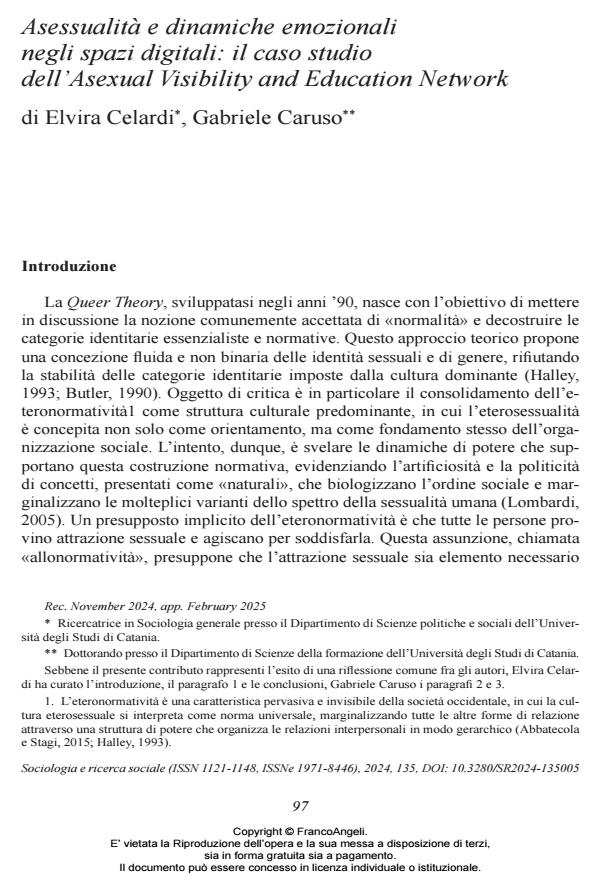Asexuality and emotional dynamics in digital spaces: a case study of the asexual visibility and education network
Journal title SOCIOLOGIA E RICERCA SOCIALE
Author/s Elvira Celardi, Gabriele Caruso
Publishing Year 2025 Issue 2024/135
Language Italian Pages 21 P. 97-117 File size 256 KB
DOI 10.3280/SR2024-135005
DOI is like a bar code for intellectual property: to have more infomation
click here
Below, you can see the article first page
If you want to buy this article in PDF format, you can do it, following the instructions to buy download credits

FrancoAngeli is member of Publishers International Linking Association, Inc (PILA), a not-for-profit association which run the CrossRef service enabling links to and from online scholarly content.
This contribution highlights the crucial role played by digital communities in providing safe and supportive environments for marginalized sexual identities, thereby enhancing their visibility and self-awareness. Specifically, the study examines the impact of the Aven (Asexual Visibility and Education Network) community on the emotional experiences of its members. Through sentiment analysis conducted on over 4,000 user comments, supported by Natural Language Processing (Nlp) tools, recurrent themes and predominant emotions expressed by users were identified. The findings, enriched by semi-structured interviews, reveal not only frustration and stigma but also experiences of acceptance and personal growth.
Elvira Celardi, Gabriele Caruso, Asessualità e dinamiche emozionali negli spazi digitali: il caso studio dell’Asexual Visibility and Education Network in "SOCIOLOGIA E RICERCA SOCIALE " 135/2024, pp 97-117, DOI: 10.3280/SR2024-135005